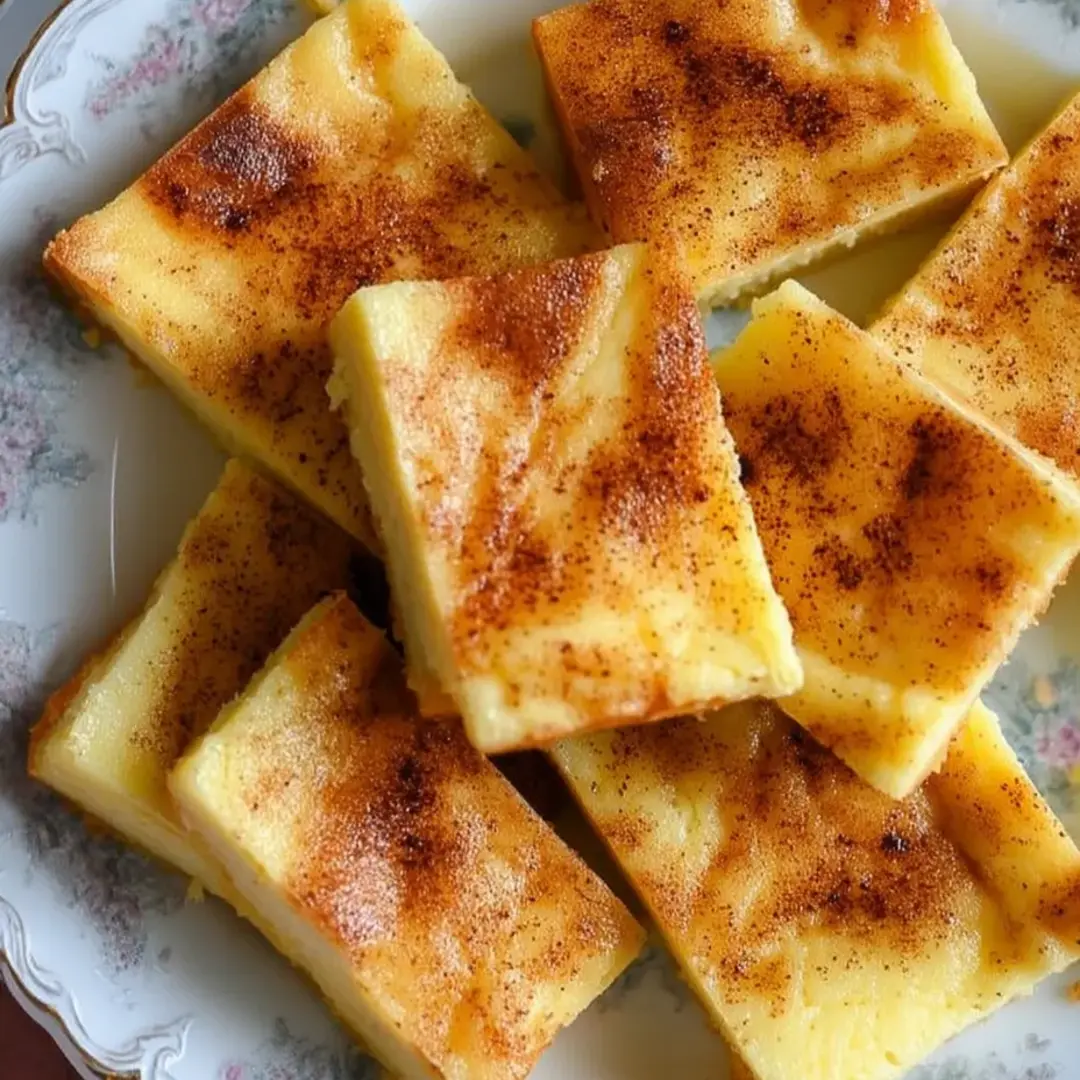 Pin it
Pin it
This traditional Greek Galatopita (pronounced gah-lah-TOH-pee-tah) is a heavenly milk custard pie that's served crustless for pure, unadulterated comfort in every bite. Unlike its more complicated cousin galaktoboureko, this simpler version skips the phyllo layers but delivers the same creamy, sweet satisfaction.
The first time I served this galatopita to friends, they were skeptical about a "crustless custard pie" but were immediately converted after the first bite.
Galatopita Ingredients
- 4 cups milk: Creates the creamy base; whole milk provides the richest result but 2% also works well
- 5 large eggs: Provides structure and that classic custard richness
- 1 cup fine semolina: The secret ingredient that creates the unique texture that's neither cake nor pudding
- 1 cup granulated sugar: Adds just the right amount of sweetness without overwhelming the delicate milk flavor
- 2 tablespoons unsalted butter, divided: Adds richness and helps create a golden bottom
- 1-2 teaspoons ground cinnamon: For dusting the top, adding warmth and visual appeal
- Pinch of salt: Enhances all the flavors
 Pin it
Pin it
How to Make Greek Galatopita
- Step 1: Preheat the oven
- Set your oven to 350°F (175°C) and position a rack in the middle.
- Step 2: Begin the custard base
- In a large pot over medium heat, melt 1 tablespoon of butter. Add the sugar and stir until combined.
- Step 3: Create the milk mixture
- Slowly pour the milk into the pot, along with a pinch of salt. Whisk continuously.
- Step 4: Add the semolina
- Gradually sprinkle the fine semolina into the milk mixture while whisking constantly.
- Step 5: Prepare the eggs
- Crack the eggs into the bowl of a stand mixer. Beat until well combined but not foamy.
- Step 6: Temper the eggs
- With the mixer running on low speed, very slowly drizzle about 1 cup of the hot milk mixture into the beaten eggs.
- Step 7: Cook the custard
- Continue cooking the mixture over medium heat, stirring constantly for about 10 minutes.
- Step 8: Prepare the baking dish
- Melt the remaining tablespoon of butter and use it to thoroughly coat a 9×13-inch baking dish.
- Step 9: Transfer and bake
- Pour the custard into the dish, dust with cinnamon, and bake for 50-60 minutes.
- Step 10: Cool and set
- Allow to cool at room temperature for 1 hour, then refrigerate for at least 2 hours.
The Magic of Semolina in Galatopita
What sets galatopita apart from other custard desserts is the use of semolina flour. This fine, yellow flour made from durum wheat creates a unique texture that's simultaneously creamy and substantial.
 Pin it
Pin it
Serving Suggestions
- Serve with Greek yogurt for tangy contrast
- Drizzle with honey for extra sweetness
- Add fresh berries for color
- Pair with strong Greek coffee
Make-Ahead and Storage Tips
- Improves with 1-2 days refrigeration
- Keeps for 3-5 days covered
- Individual portions freeze well
I first tasted galatopita as a child at my godmother's house during Easter celebrations.
My final thought on this Galatopita is that it beautifully represents what I love most about traditional Greek cooking.
Frequently Asked Questions
- → What is semolina and can I substitute it with something else?
- Semolina is a coarse flour made from durum wheat that gives this custard its distinctive texture. While it's best to use fine semolina for authentic galatopita, in a pinch you could substitute with farina (Cream of Wheat) for a similar texture. Regular all-purpose flour will work but will produce a different texture and flavor.
- → Why does my galatopita need to cool for so long before cutting?
- The 3-hour cooling process (1 hour at room temperature plus 2 hours in the refrigerator) is crucial for the custard to set properly. Cutting into it too soon will result in a runny consistency. The cooling time allows the semolina to fully absorb the liquid and firm up to the perfect sliceable texture.
- → Can I add other flavors to galatopita?
- Absolutely! While traditional galatopita is flavored simply with cinnamon, you can add 1-2 teaspoons of vanilla extract to the custard mixture, or try adding orange or lemon zest for a citrus note. Some versions include a splash of brandy or mastiha liqueur for additional flavor.
- → How can I tell when my galatopita is properly cooked?
- The galatopita is done when the surface has turned a golden brown color and feels set when lightly touched. The edges might pull away slightly from the sides of the pan. If you notice the top browning too quickly but the center still seems undercooked, cover loosely with foil for the remaining baking time.
- → Can I make this dessert ahead of time for a party?
- Yes, galatopita is an excellent make-ahead dessert. You can prepare it up to 2 days before serving and store it covered in the refrigerator. In fact, many Greeks believe it tastes even better on the second day when the flavors have had time to develop. Just keep it refrigerated and bring to room temperature about 30 minutes before serving.
